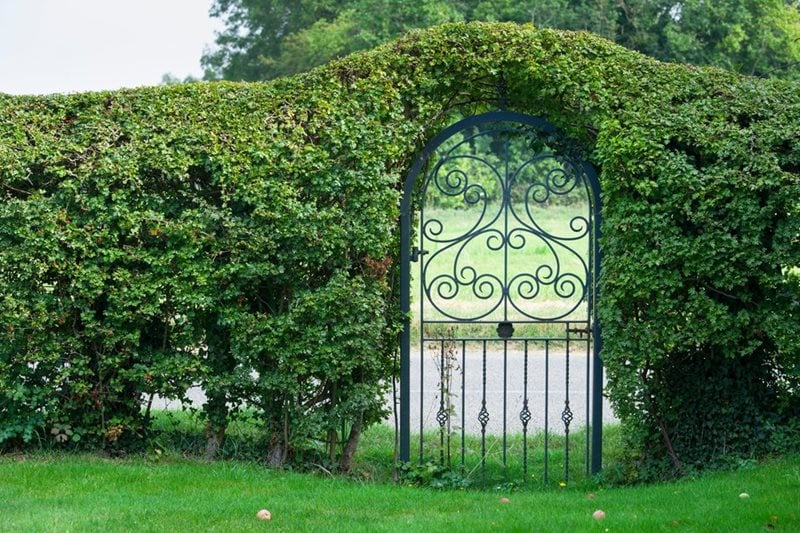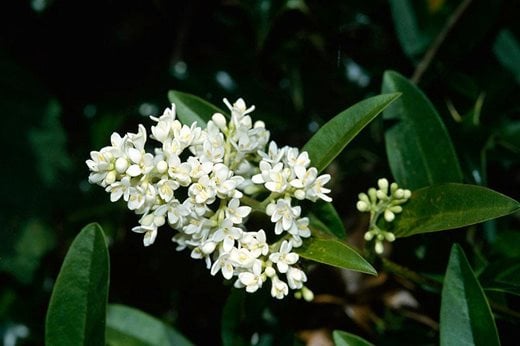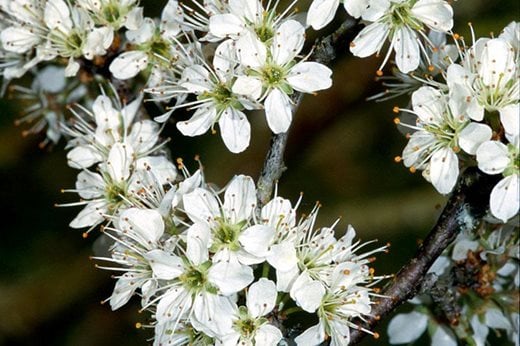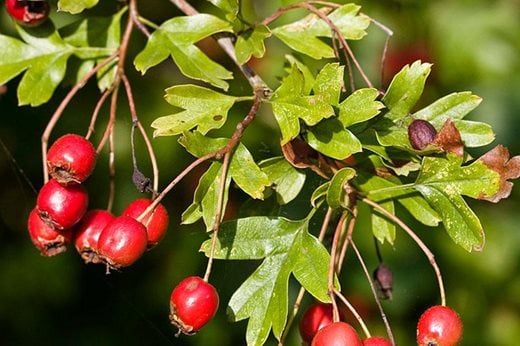Helen Bostock from the RHS Gardening Advice service picks 10 great choices of native flowering and fruiting shrubs for hedging

Hedges made from flowering and fruiting native plants are a massive boon for wildlife. For a dense base, hard prune newly planted native hedges containing hawthorn or blackthorn to 15-30cm (6in-1ft), or plant a double row instead. Avoid pruning the leading shoots of holly until they have reached the desired height.
Trim hedge sides from a young age to again promote thickness, clipping at the end of summer or in winter. To maximise the chances of flowering and fruiting, prune established hedges in alternate years rather than annually.
Excellent for damper sites, alder buckthorn (Rhamnus frangula) is worth considering where such conditions are encountered.
It is also valued for being a larval food plant of the Brimstone butterfly, along with the purging buckthorn, Hippophae rhamnoides.
Large, downy leaves of hazel (Corylus avellana) support a range of moth caterpillars, while the flowers (male flowers form catkins) attract many bee species.
Good for larger hedges and can also be allowed to grow out as a hedgerow tree (see below). Nuts devoured by squirrels and mice.
Another attractive addition to a hedging scheme. Guelder rose (Viburnum opulus) produces lacecap cream flowers in summer, good for pollinating insects such as hoverflies.
These are followed by translucent red berries, eaten by blackbirds, thrushes and finches.
A native hedge bursts to life in the autumn if spindle (Euonymus europaeus) is included in the mix. With scarlet leaves and unusual, orange and red berries.
These two-tone fruits are particularly favoured by robins. Tolerant of coastal conditions.
A versatile shrub, dogwood (Cornus sanguinea) adds a spot of colour with its red young stems and autumn colour.
Along with the spindle, leaves of the dogwood provide food for caterpillars of the beautiful Holly Blue Butterfly. Black berries attract a wide range of garden birds.
Holly (Ilex aquifolium) is a slow but steady grower in a hedge, valued for its evergreen element. Its prickly habit is a good security feature for a boundary hedge.
Male and female plants are required for berrying. Ivy is an alternative way to provide evergreen cover and can be allowed to creep into an established hedge.
The dog rose (Rosa canina) produces white flowers with a pink flush in mid- to late summer.
The red hips that follow aren’t devoured straight away but in late winter all manner of birds – fieldfares, redwings, finches, garden warblers, blackcaps and jays – will feast on them. Rosa rubiginosa - sweet briar or eglantine – is another good hedging rose

Gardeners may have fallen a little out of love with privet but wild privet (Ligustrum vulgare) deserves a place in a native hedge.
Bees will visit the clusters of cream flowers and birds such as thrushes, blackbirds and, if you’re lucky, waxwings, will feed on the black berries. Privet Hawk Moth is a stunner whose caterpillars can be found on the foliage.

Blackthorn (Prunus spinosa) is also a common component of native hedges though its vigour lends it to larger gardens.
Long spikes makes a good deterrent to unwanted intruders while wildlife benefits from white spring flowers and fruit known to gardeners (and gin drinkers!) as sloes.

Hawthorn (Crataegus monogyna) is a native hedging staple, often making up the bulk (50% or more) of a mixed hedge.
Its dense habit and thorny growth give it excellent stock-proofing properties and a good site for birds looking for somewhere discreet to nest or roost. Creamy-coloured flowers are followed by red berries.

